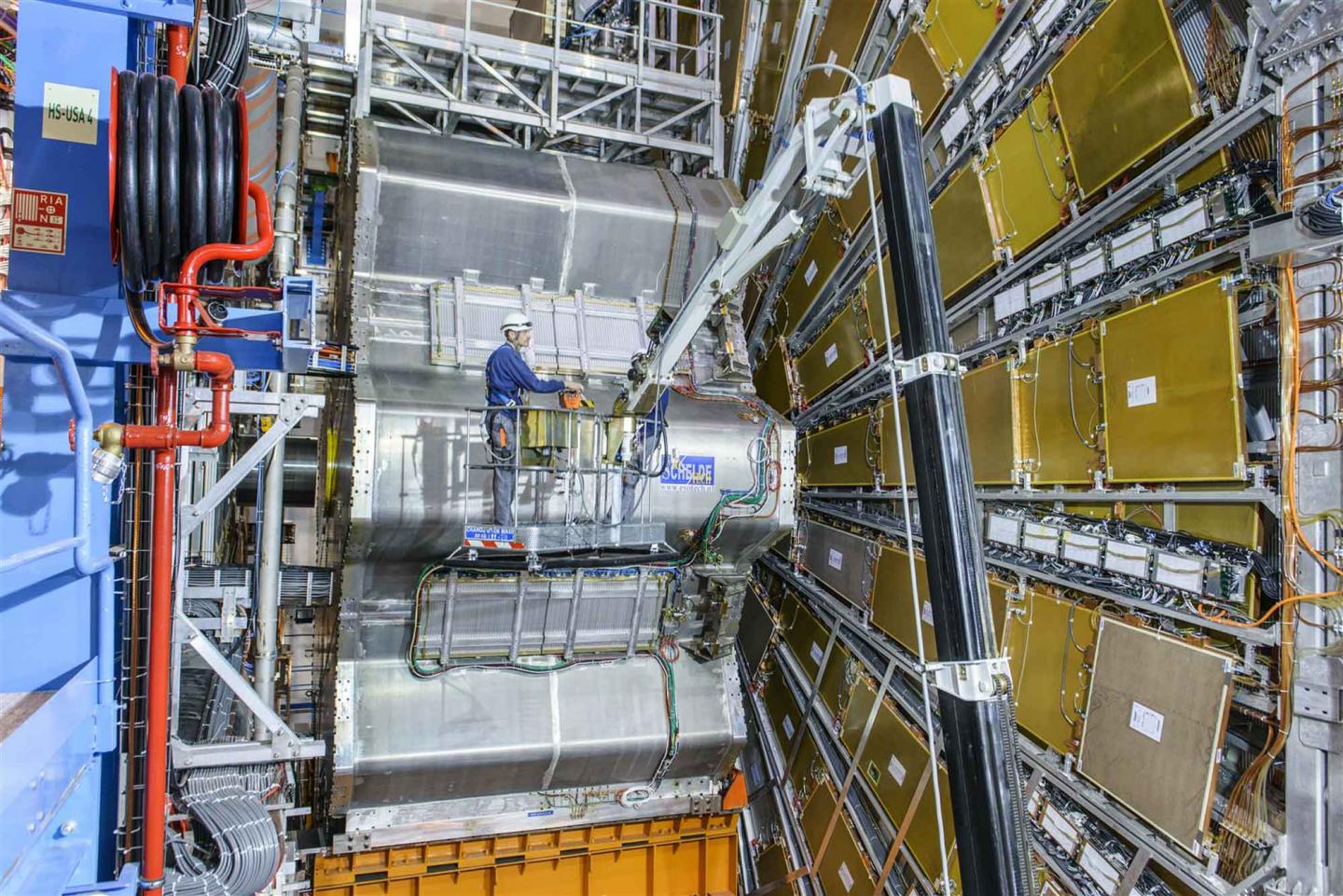At the ATLAS experiment at CERN, physicists and engineers are testing their subdetector systems – using particles from outer space.
During its last 3-year run, the Large Hadron Collider (LHC) achieved its highest-energy collisions at 8 TeV. But when the LHC starts up again in 2015 it will hit 13 TeV, which means new challenges for the large detectors ATLAS, CMS, ALICE and LHCb. Subdetectors on the ATLAS experiment will have to be thoroughly tested for performance at high energy. But how do you test a general-purpose particle physics detector for high-energy collisions when there are no particle collisions taking place? "Cosmic rays," says ATLAS run coordinator Alessandro Polini.
These high-energy particles from outer space are mainly (89%) protons but they also include nuclei of helium (10%) and heavier nuclei (1%), all the way up to uranium. The energies of the primary cosmic rays range from around 1 GeV – the energy of a relatively small particle accelerator – to as much as 108 TeV, far higher than the beam energy of the LHC. We don’t feel them, but because they register as tracks in the ATLAS detector, physicists can use cosmic rays to calibrate and align the subdetectors when the LHC is switched off. "If there are gaps or certain tracks aren’t aligned at specific points, there is more work to be done," says Polini.
Each subdetector is set up and tested in isolation, then joined to other subdetectors and finally installed into the whole. “It is a bit like an orchestra: the different instruments practice on their own, then we bring them together one by one," says Polini. "You need to tune and get them in the best shape possible first, only then can the ensemble work."
ATLAS took 27 inverse femtobarns of data (roughly 2 × 10 15 proton-proton collisions) during the LHC's first run, allowing for the discovery of the Higgs boson and many other results. In the second run, bunches of protons will be accelerated to nearly twice the energy and timed to collide every 25 nanoseconds in the detector. This means up to 40 million collisions per second, two times more than during the previous run.
Polini says there will be a "final rehearsal" in November with an extended cosmic-ray run when all the layers of the ATLAS detector will come together and the magnetic fields will be switched on. "ATLAS will then be ready for its symphony,” he says.

